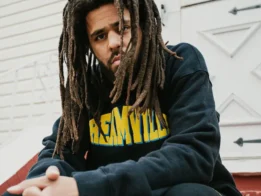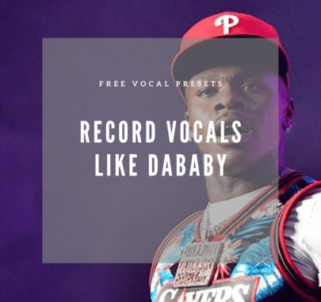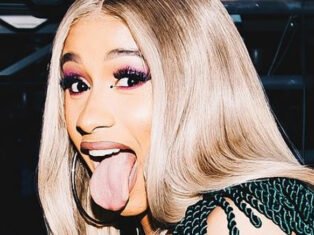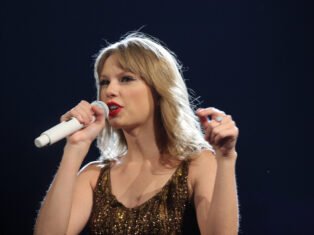
Kendrick Lamar – Unraveling The Storytelling In His Urban Music
Many have hailed Kendrick Lamar as a modern-day poet of the streets, blending raw storytelling with intricate wordplay in his urban music. From his debut album, "good kid, m.A.A.d city," to the Pulitzer Prize-winning "DAMN.," Lamar has captivated audiences with his vivid narratives of life in Compton, social issues, and personal introspection. This blog post investigates into the depths of Lamar's storytelling prowess, exploring the themes, symbolism, and lyrical genius that make him a standout figure in the world of hip-hop.
The Roots of Storytelling
For a deeper understanding of Kendrick Lamar's storytelling prowess, it is crucial to investigate into the roots of his narrative style. One way to do this is by examining the intricate narrative of his hip-hop beef with Drake. The history of the beef between Kendrick Lamar and Drake is a complex narrative woven through the fabric of hip-hop culture. If you are looking to explore this compelling saga further, you can read about it here.
Kendrick's Early Influences
The early influences in Kendrick Lamar's life play a significant role in shaping his storytelling abilities. Growing up in the streets of Compton, Lamar was exposed to the harsh realities of gang violence, poverty, and systemic oppression. These early experiences seeped into his music, giving him a raw and unfiltered perspective on life that resonates with his audience.
The Impact of West Coast Hip-Hop
Roots in the West Coast hip-hop scene have heavily influenced Kendrick Lamar's storytelling style. Artists like Tupac Shakur, N.W.A, and Dr. Dre paved the way for him, showing him how to use music as a platform to tell stories of struggle, resilience, and hope in the face of adversity.
This exposure to the gritty narratives of West Coast hip-hop legends shaped Lamar's approach to storytelling, infusing his lyrics with authenticity and depth. By drawing from the rich history of the West Coast rap scene, Kendrick Lamar has been able to craft compelling narratives that speak to the realities of life in urban America.
Narrative Techniques
Vivid Imagery and Symbolism
To understand Kendrick Lamar's storytelling, one must pay close attention to the vivid imagery and symbolism he employs in his lyrics. Lamar paints detailed pictures through his words, using vivid descriptions that bring his narratives to life. In tracks like "Sing About Me, I'm Dying of Thirst," he weaves compelling visuals that immerse listeners in the struggles and realities of the characters he portrays. The symbolism Lamar incorporates adds depth to his storytelling, allowing for multi-layered interpretations of his messages.
Character Development and Perspective
Character development is a crucial aspect of Kendrick Lamar's storytelling. Through shifting perspectives and intricate character arcs, Lamar creates a rich tapestry of experiences that reflect the complexities of urban life. By embodying different personas and exploring various viewpoints, Lamar offers listeners a glimpse into the diverse and sometimes conflicting emotions and experiences present in his narratives.
Character development in Lamar's music is not limited to just the protagonists of his stories; it extends to the supporting cast and even the environments he describes. Each character and setting is meticulously crafted to contribute to the larger themes and messages Lamar seeks to convey through his music.
Non-Linear Storytelling and Fragmentation
Any analysis of Kendrick Lamar's storytelling would be incomplete without discussing his use of non-linear storytelling and fragmentation. Lamar deftly pieces together narratives that unfold in fragments, jumping back and forth in time to create a sense of dissonance and urgency. This approach mirrors the chaotic and disjointed nature of the modern urban experience, where past, present, and future often collide.
Techniques such as interludes, skits, and sudden shifts in perspective contribute to the non-linear storytelling style that has become a hallmark of Lamar's music. By challenging traditional narrative structures, Lamar invites listeners to engage actively with his stories, piecing together the puzzle of his urban landscapes and the lives that inhabit them.
Themes and Motifs
Despite Kendrick Lamar's music being deeply entrenched in urban culture, his storytelling transcends boundaries and resonates with a global audience. Themes of social justice, personal struggle, community, and identity are intricately woven into the fabric of his lyrics, painting a vivid picture of the complexities of modern-day life.
Social Justice and Activism
An imperative thread running through Kendrick Lamar's discography is his unwavering commitment to social justice and activism. From tracks like "Alright" that became an anthem for the Black Lives Matter movement to his commentary on systemic racism and inequality in songs like "The Blacker the Berry," Lamar fearlessly confronts and challenges societal norms.
Personal Struggle and Self-Discovery
Struggle is a recurring motif in Kendrick Lamar's music, reflecting his own personal journey and the challenges faced by many in marginalized communities. Through introspective tracks like "u" from his album "To Pimp a Butterfly," Lamar researchs deep into his inner turmoil and wrestles with his inner demons as he navigates fame, self-doubt, and mental health issues.
A common theme in Kendrick Lamar's storytelling is the transformative power of self-discovery. His lyrics often explore the process of personal growth and overcoming adversity, encouraging listeners to reflect on their own paths to self-realization and empowerment.
Community and Identity
Personal relationships, cultural heritage, and social connections play a significant role in Kendrick Lamar's narrative. Songs like "Sing About Me, I’m Dying of Thirst" poignantly depict the impact of loss and the importance of community support, while tracks like "The Art of Peer Pressure" research into the complexities of peer influence and individual identity.
Identity, both collective and individual, is a central theme in Kendrick Lamar’s music. Through his storytelling, he explores the nuances of race, class, and cultural heritage, challenging stereotypes and celebrating the richness of diversity within urban communities.
The Role of Autobiography
Keep reading to explore how Kendrick Lamar's personal experiences shape the narrative in his urban music.
Drawing from Personal Experience
Autobiography plays a significant role in Kendrick Lamar's music, as he often draws inspiration from his own life and upbringing in Compton, California. His lyrics reflect the struggles and triumphs of growing up in a rough neighborhood, providing a raw and authentic glimpse into his personal journey. By sharing his experiences through storytelling, Lamar invites listeners to empathize with his perspective and gain insight into the realities of urban life.
Blurring the Lines between Fact and Fiction
The line between truth and fiction is often blurred in Kendrick Lamar's music, as he weaves elements of his own reality with imaginative storytelling. This blending of fact and fiction adds layers of complexity to his narratives, challenging listeners to discern where his personal experiences end and his creative storytelling begins. Through this technique, Lamar creates a rich tapestry of themes and emotions that resonate with audiences on a profound level.
The interplay between reality and imagination in Lamar's music allows him to craft intricate narratives that transcend traditional boundaries of autobiographical storytelling.
The Therapeutic Power of Storytelling
Autobiography serves as a form of therapy for Kendrick Lamar, allowing him to process and make sense of his life experiences through music. By translating his struggles, fears, and aspirations into art, Lamar not only shares his story with the world but also finds healing and catharsis in the creative process. The therapeutic power of storytelling enables Lamar to explore his innermost thoughts and emotions, offering a sense of liberation and emotional release.
An exploration of Lamar's music reveals how storytelling acts as a therapeutic tool, helping him navigate the complexities of his past and present while envisioning a hopeful future.
The Use of Allegory and Metaphor
Conveying Complex Ideas through Symbolism
Symbolism plays a crucial role in Kendrick Lamar's music, allowing him to convey complex ideas and emotions in a way that resonates deeply with his audience. Through allegory and metaphor, Lamar creates narratives that go beyond simple storytelling, delving into the intricacies of social issues, personal struggles, and the human experience.
The Biblical and Mythological References
One of the most striking elements in Kendrick Lamar's work is his use of biblical and mythological references. By drawing inspiration from these timeless stories, Lamar infuses his music with layers of meaning and cultural significance. His references to biblical figures like Moses or themes like resurrection add depth and richness to his lyrics, inviting listeners to explore the deeper meanings behind his words.
Plus, Lamar draws from mythological tales that transcend time and place, incorporating symbolism from Greek mythology, for example, to amplify the universal themes in his music. By weaving these references into his storytelling, Lamar creates a tapestry of meaning that invites listeners to interpret and engage with his art on multiple levels.
Deciphering the Codes and Hidden Meanings
The intricate web of codes and hidden meanings in Kendrick Lamar's music adds another layer of intrigue to his storytelling. Through his lyrics, Lamar presents puzzles and cryptic messages that challenge listeners to decode and unravel the deeper significance behind his words. The use of metaphorical language, wordplay, and cultural references creates a treasure trove of hidden meanings that reward attentive listeners with a deeper understanding of Lamar's message.
The cryptic nature of these codes adds an element of mystery and excitement to Lamar's music, fostering a sense of exploration and discovery among his fans. By encouraging listeners to engage with his art on a deeper level, Lamar invites them to become active participants in the meaning-making process, blurring the lines between artist and audience.
Collaborations and Guest Verses
Many of Kendrick Lamar's songs feature collaborations with other artists, showcasing his ability to weave together different narratives and perspectives into his music. One notable example is his track "Alright," which features a powerful verse from fellow rapper and collaborator, Pharrell Williams. This dynamic adds depth and diversity to Lamar's storytelling, creating a multi-dimensional listening experience for his audience. In another instance, Lamar's collaboration with Rihanna on the song "LOYALTY." explores themes of trust and loyalty in relationships, further enhancing the emotional impact of the track.
The Importance of Featured Artists
For Kendrick Lamar, featuring other artists on his tracks is not just about adding star power or diversity to his music; it's a deliberate choice to enhance the depth and resonance of his storytelling. In his collaboration with U2 on the song "XXX.," Lamar juxtaposes his own perspective with Bono's vocals, creating a layered narrative that researchs into themes of violence, spirituality, and social justice. These collaborations not only add to the sonic richness of Lamar's music but also serve to amplify the messages and themes he seeks to convey.
How Guest Verses Enhance the Narrative
On tracks like "M.A.A.D City," featuring MC Eiht, Kendrick Lamar uses guest verses to expand on the narrative he's crafting, providing different viewpoints and experiences that enrich the overall story. Guest verses offer a unique opportunity for Lamar to collaborate with artists who bring their own perspectives and styles to the table, creating a more immersive and compelling listening experience for his audience. This collaborative approach allows Lamar to push the boundaries of his storytelling, offering fresh insights and angles that keep the listener engaged from start to finish. This collaborative approach allows Lamar to push the boundaries of his storytelling, offering fresh insights and angles that keep the listener engaged from start to finish.
The Art of Curating a Cohesive Sound
With each guest verse carefully selected and integrated into the fabric of his songs, Kendrick Lamar demonstrates a masterful skill in curating a cohesive sound that resonates with his audience. From inviting artists like Anna Wise on tracks such as "These Walls" to featuring Jay Rock on "Money Trees," Lamar's guest verses are not just an afterthought but an integral part of the storytelling process. The art of curating these collaborations lies in Lamar's ability to blend different voices and styles seamlessly, creating a unified narrative that unfolds with each verse and refrain. Cohesive collaborations serve to enhance the overall listening experience, allowing Kendrick Lamar to create music that is not only thought-provoking and socially conscious but also deeply engaging and emotionally resonant. By carefully selecting featured artists and guest verses, Lamar elevates his storytelling to new heights, solidifying his reputation as one of the most innovative and influential voices in contemporary music.
Final Words
Following this exploration of Kendrick Lamar’s storytelling in his urban music, it is evident that his lyrics are a reflection of the realities of growing up in a rough neighborhood, grappling with societal issues, and navigating the complexities of fame. Lamar’s ability to craft intricate narratives and deliver them with unmatched lyrical prowess sets him apart as a true poet of our time. His impact on the hip-hop genre is undeniable, as he continues to push boundaries and challenge listeners to confront uncomfortable truths through his music.
For further insights into the evolution of modern hip-hop and the battle for supremacy among artists like Kendrick Lamar, Drake, and J. Cole, this article on Kendrick Lamar, Drake, and J. Cole: The battle for hip-hop supremacy offers a deeper examine the current state of the genre and the impact these artists have had on shaping its trajectory.
© DOPE MUSIC ORG












